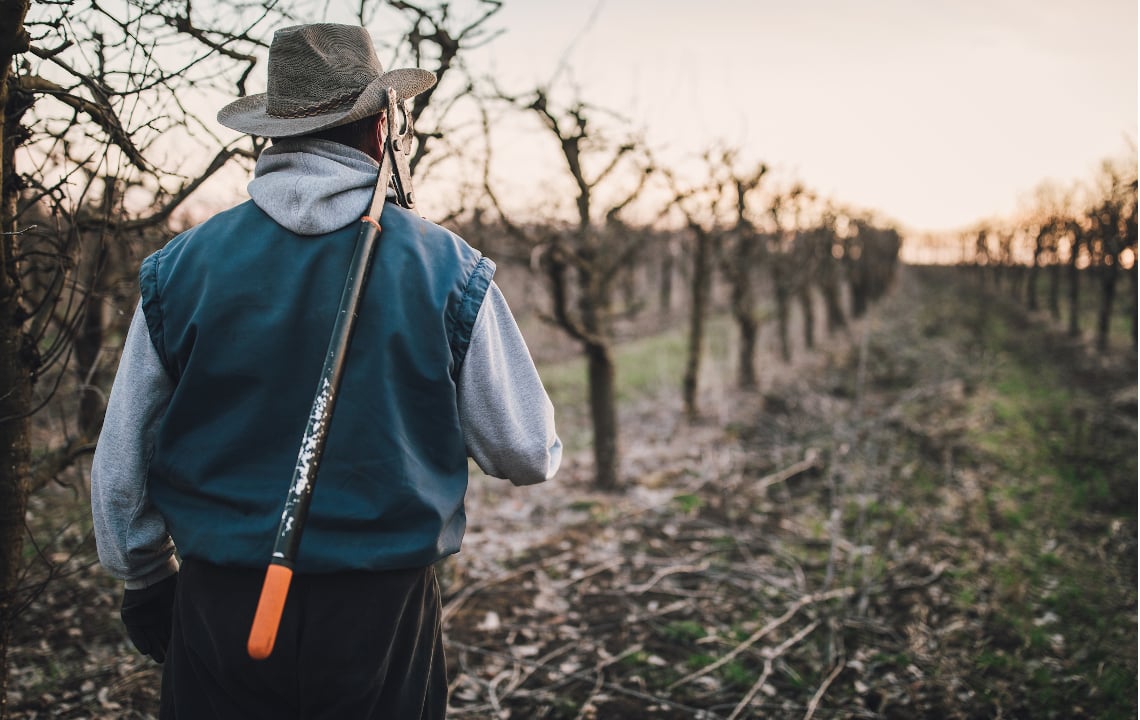Winters in the South may not always mean snow, but it does get cold! Especially for those who have farm chores or outdoor projects to attend to. A Canadian homesteader living in the South shares helpful tips on the best winter wear investments for Southerners plus advice on how to layer up and enjoy the season.
As any Southern transplant will tell you, winters are different down here.
There’s not much winter sports culture, snowfall is scarce in most places and when there is snow everything shuts down and everyone hunkers down (and bread and milk disappear from store shelves!).
However, if you run a farm, hobby farm or homestead, there’s no hunkering down indoors for the winter.
Come snow, rain, sleet, wind or ice you are on the hook for your property, animals and other farm chores.
Plus, living rural typically means less access to cold-weather indoor activities for you or your children. Such as gyms, trampoline parks, indoor pools and trips to the mall playground.
The simple solution to this is to embrace the outdoors during the cooler months of winter. And the only way to do this comfortably is to dress for the weather.
In this article, I’ll share my best tips (as a Canadian now living, homesteading and farming in the South) on how to layer up so you can play and do chores comfortably all winter long.
How to Layer Up for Winter Farm Chores & Outdoor Fun in the South
I was born in January in Northern Central British Columbia, Canada, on a small hobby farm/extended family compound.
My parents, unconventional and hearty souls, had barely finished renovating their home, an old Swiss Chalet before I was born.
To say it was cold in winter is an understatement.
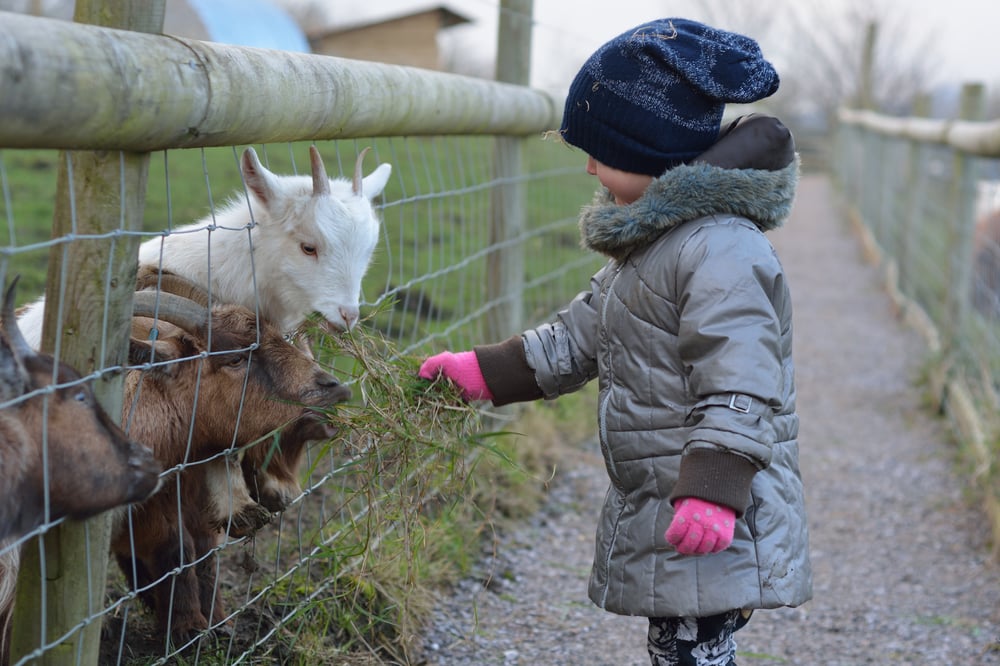
Our heating bill the first year in that home was so astronomical that my late mother told stories about how I learned to crawl in mittens as they worked out how to heat the entire home using a wood stove.
The river behind our house would freeze solid over the winter, we’d use a bucket loader to plow our driveway and snow would drift up to the roof for weeks on end.
Regardless, we had chickens, goats and pigs that needed feeding, and I have photos of me bundled up to my eyebrows in layers upon layers of clothing and snow gear as I helped milk the goats.
These days, I live with my family on a small medicinal herb farm and homestead in Western North Carolina.
Snow here is sporadic, but the winter days and nights can be very, very cold and windy.
Still, I take my children outdoors every single day to take out the compost, tend the vegetables in our high tunnel, chop wood and engage in unstructured play.
We joke this is “the Canadian way”, but really, it’s as much for their and my well-being (and our sanity) as it is for our homestead.
We’ve written many articles about the documented benefits of spending time outdoors in nature, even in cold weather. Some examples include:
- Better sleep
- Better mental and emotional well-being
- Enhanced immunity
- Better vision
- Improved gut microbiome health and diversity
- Enhanced exercise benefits
- And much more.
However, the only reason we’re able to go outdoors nearly every day of the year (exceptions include thunderstorms, extreme cold with wind or other dangerous weather conditions) is because we have the right combination of clothing.
In other words, no one around here is going out in 30-degree temperatures in runners, cotton leggings and a hoodie!
Here’s how we layer up to run our farm and homestead in the winter and hike, run and play outdoors (nearly) every single day.
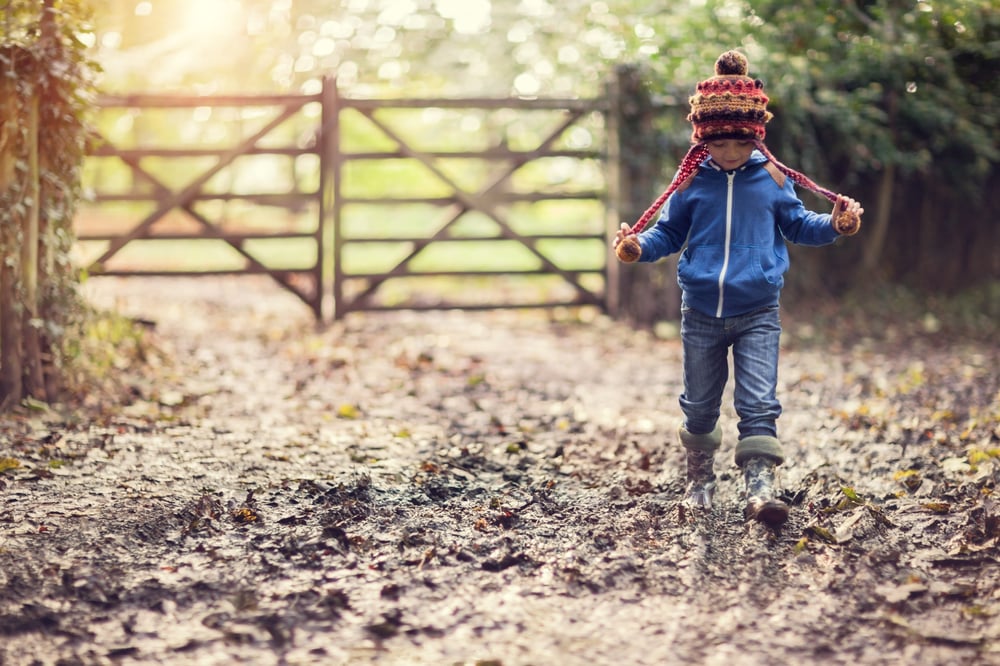
11 Practical Tips for Procuring Winter Gear You'll Actually Use in the South
My neighbor and I were recently talking about the futility of overspending on winter boots while living in the South.
For most of us, it just doesn’t make sense to spend a fortune outfitting your entire family for a few days of possible snow…only to have them outgrow those clothes next year.
Yet, I pity the parent who doesn’t have a pair of warm boots, a winter coat, waterproof gloves, long johns, a warm beanie (known as a toque in Canada) and a scarf—for them and their child/children—on the day the snow finally falls.
Thankfully, there are some ways to get around this without spending a fortune on winter clothing and gear.
Here are 11 helpful tips on how winter-outfitting the whole rural crew, Southern style:
1: Shop CONSIGNMENT
This is a no-brainer for Southerners who may only use certain cold-weather clothes for a few days or weeks out of the year.
If your local consignment store doesn’t stock winter clothing and gear, use sites like ThredUp, Poshmark or even Back Country to find great deals on everything you need.
Then, you can hand them down or re-consign them when your children outgrow them.
2. Buy rubber boots or duck boots that double as winter boots
Bogs, for example, are toasty warm in freezing weather but can also be used around the farm and homestead most of the year.
Yes, they are a little pricier but think of them as two boots in one. Plus, unlike cheaper rubber boots, they last forever and can, therefore, often be found on consignment and re-consigned.

I keep a pair of Bogs for my son and daughter, plus a cheaper pair of cooler rubber boots for hotter days.
Another option is lined duck boots. They work great for mucking around, are water-resistant in snow, and look cute cleaned up with a pair of jeans on a fall or winter day.
3. Invest in some super warm merino wool socks
Merino wool socks used to cost a fortune. However, these days you can find deals on non-designer brands at price clubs and various online retailers.
If you’ll only use them occasionally, there’s no point in buying the best brand.
These can be used (single or doubled) with regular rubber boots, hiking boots or duck boots to keep your feet warm and dry in snow, sleet or ice.
They won’t make everyday boots as warm as winter boots, but they’ll do the trick for a few hours of fun (or chores) in the snow.
4. invest in a polar fleece, wool and/or cashmere sweater
These can be worn underneath a light-weight or medium-weight puffer, work coat or windbreaker and can save you the cost and storage of buying a heavy-duty winter coat.
Plus, they’re wonderful paired with a vest for the spring, fall and more mild Southern winter days
5. buy winter work gloves and/or warm inserts
Sure, you could double-up those inexpensive acrylic knit gloves, but one or two pairs of winter work (and play) gloves are an inexpensive investment that will save your hands when doing farm chores on cold days and nights.
If you’d rather not invest in heavier gloves for winter, warm glove liners can help transform lighter adult or children’s gloves into appropriate winter wear.

6. invest in high-quality leather gloves for chores
A nice soft, suede-like and tough leather glove can indeed keep your hands warm while chopping wood or doing chores.
You can also layer up with wool or acrylic gloves or glove inserts underneath in a pinch.
7. do not forget a hat!
Did you know the majority of your body heat escapes through your head?
That’s why a good beanie/toque that covers your ears and head is essential for effective layering. Even if you don’t have the best coat, gloves or scarf, a warm hat can be a game-changer in how warm or cold you feel overall.
Look for fleece-lined hats or ultra-soft merino wool or cashmere to prevent itching.
If you have a hat-resistant child, a pair of ear muffs with a hood up is a decent compromise.
8. can't stand scarves? get yourself a warm hoody or turtleneck
A scarf can do wonders for keeping warmth from escaping through a coat’s neck opening. However, not everyone likes the feel of a scarf.
If this sounds like you, consider testing out layering a turtleneck sweater or a hoodie (hoods-up!).
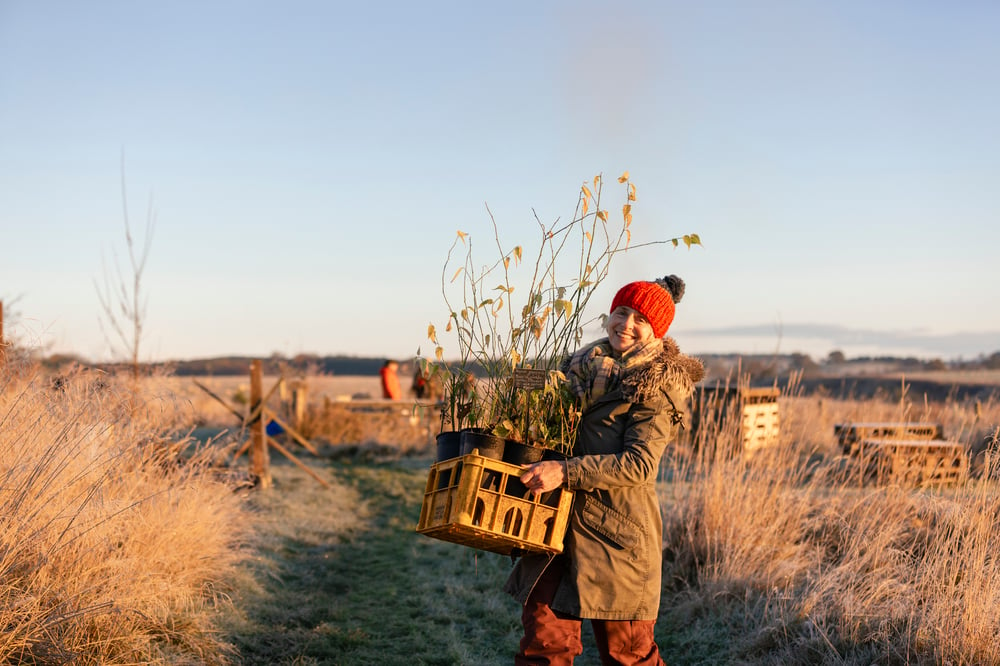
9. a pair of long johns or fleece-lined leggings are worth it
Long johns are an inexpensive way to layer up all-season pants for winter weather.
Synthetic long johns are typically cheaper than natural fibers, but you can find both for good deals in the off-season.
Want your long johns to do double duty? Invest in natural-fiber long johns, like cotton, and wear them as pajamas on cold nights.
For women, fleece-lined leggings are a good multi-purpose substitute.
10. but some inexpensive snow pants or layer up your rain pants
Unless you ski, an inexpensive pair of snow pants is all you’ll need for the occasional snowfall and extra cold days.
Unsure if you’ll ever see snow worthy of snow pants?
Consider buying a more versatile pair of rain pants and layering with a base of long johns or fleece tights, a pair of sweatpants or jeans and then your rain pants.
This should be sufficient for most Southern snow storms.
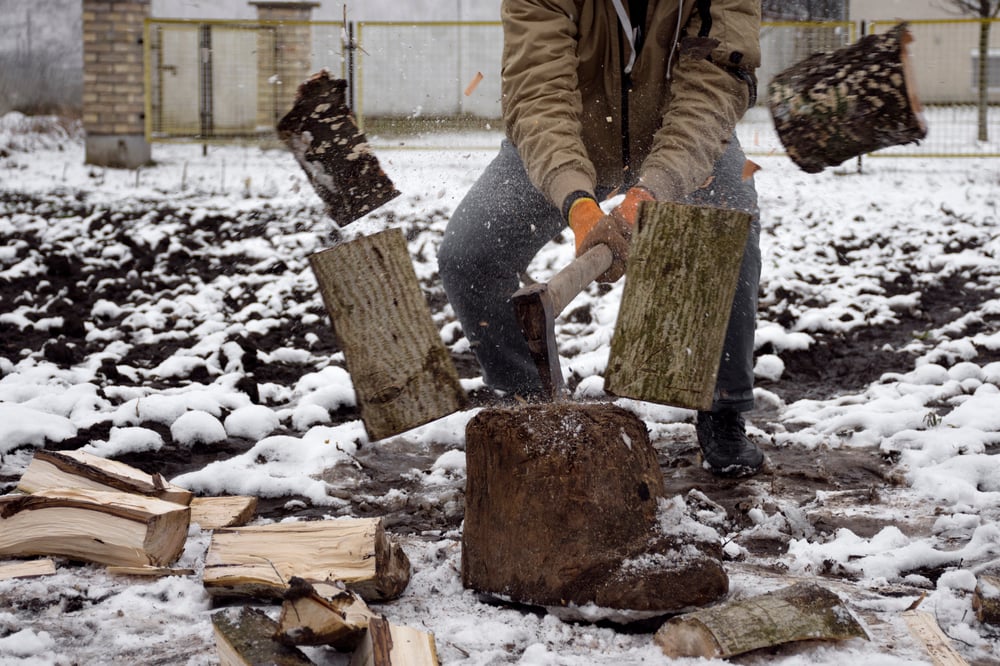
11. a heavy-duty winter coat is optional
Unless you live in the mountains or travel to ski, most Southerners can get by with a light to medium puffer and/or heavy-duty windbreaker or work coat plus the right layers. The exception would be those living in the mountains (we all have heavy-duty winter coats here in Western North Carolina, for example).
Down is an excellent choice because it’s a great insulator, so it’s typically not too hot on warmer days and not too cool on colder days.
Synthetic fills can also be good depending on how the coat is lined and what temperature it’s rated for.
The off-season (which starts sooner than you’d think these days…like the first day of winter in some cases) is prime time to get high-quality coats at a discount at sites like Sierra Trading Post, Back Country, L.L. Bean, REI, Eddie Bauer, and Land’s End.
Price clubs often have great deals on down coats in the fall for the whole family as well.
How to Layer for Winter Weather: Step-by-Step
Layering is not difficult, but there is some technique to it.
The first rule of layering is THAT it can’t hurt to add more layers!
If you’re unsure how warm the day will get, remember it’s always easier to shed a layer than to add another.
The second rule is to think in terms of three.
- Your first layer keeps you dry.
- Your second layer keeps you insulated and warm.
- Your third layer keeps the elements out.
If you look at the anatomy of any high-quality, weather-proof winter coat, you’ll see the same pattern.
Let’s break this down by category.
Base Layer Options
These should be form-fitting shirts and pants made from breathable cotton, merino wool or synthetic fabric.
This could be a form-fitting long-sleeve t-shirt, a long john shirt, or a very light sweater, turtle neck or waffle shirt.
Your base layer should be thin enough to fit comfortably under a big winter coat or a second layer like a sweater or polar fleece.
Mid Layer Options
The mid layer is what will keep you warm, which could be a sweatshirt, sweater, hoodie, or fleece.
If you don’t have a big winter coat, I’d suggest choosing a warm merino wool or cashmere sweater or polar fleece.
If you do have a big winter coat, it can serve as your mid-layer and outer layer, although some people prefer a mid-layer plus a winter coat.
Outer Layer Options
If you have a waterproof winter coat, this serves as your mid and/or outer layer.
If not, your outer layer could be a synthetic windbreaker, work coat, heavy-duty raincoat, wool coat or heavy-duty wool sweater (wool is naturally water resistant) or another type of shell.
Whatever it is, it should be waterproof or water-resistant.
Once you have your main layers covered, just add hats, scarves or hoodies, gloves and boots, and you’re good to go.
You can follow this formula for any type of layering, be it for spending hours doing farm chores, a brisk winter jog or hike or for playing outdoors.
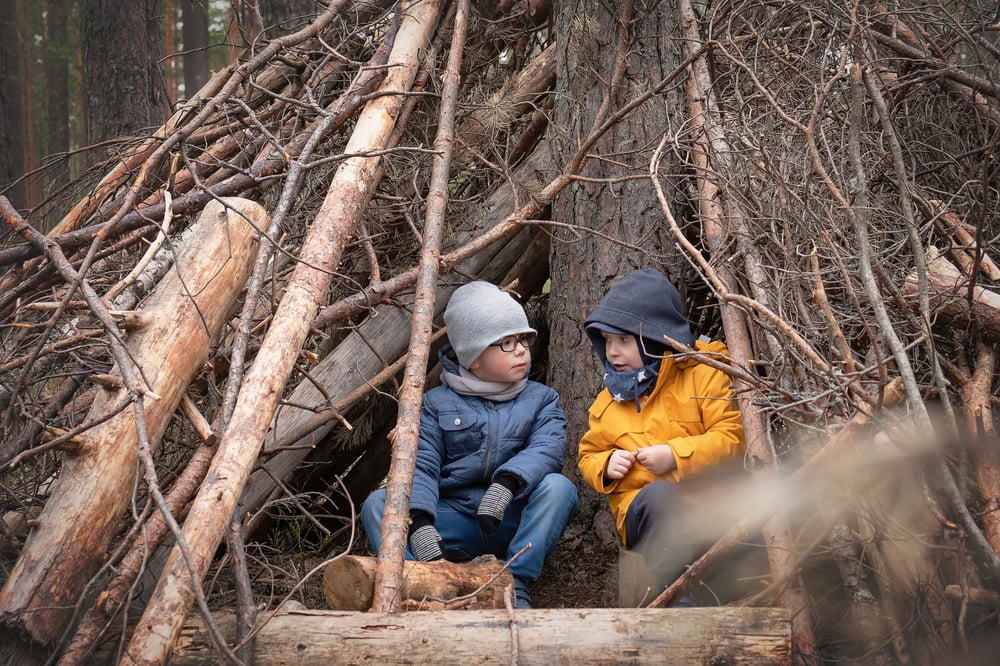
Tips for Layering Children
My late mother was a preschool teacher in Toronto in the 1970s, and part of her job was getting dozens of little kids into snowsuits at least twice a day.
Needless to say, she became an expert. Here are some tips I learned from her.
Have everyone use the bathroom and pull up their socks before you start layering up.
- Snow or rain pants go on first.
- Boots go on next (because it’s hard to put on boots with gloves).
- If you want your child’s boots tucked into their snow or rain pants, it’s still best to put the pants on first, then tuck in the boots to avoid stretching out or damaging the pant legs.
- Scarves and hats are next. (Move quickly now, as hats will warm them up fast.)
- Gloves or mittens go on after that (by putting on gloves now, you’re more assured they’ll be tucked into the coat and can help hold sleeve cuffs in place. Rolled-up cuffs in a coat sleeve can be very frustrating for children, so heed this advice!).
- Finally, the coat goes on. You can help your child do this themselves or do the old over-the-head trick.
- Adjust scarves, hats, etc. as needed and get them out the door FAST.
It may go without saying that having everyone undress in the garage, on the porch, or in the laundry room is ideal.
It’s also wise to dry their clothes immediately in the dryer in case they want to go back out.
Insofar as babies go, a stroller blanket is a wonderful investment to help keep your little one warm and snug for walks on cold days. I also made sure my babies had warm fleece booties, fleece and wool pants, winter coats, beanies/toques and mittens attached with a cord so they wouldn’t get lost.
When we moved to Western North Carolina, I also got my son a fleece snowsuit on clearance at Nordstrom Rack for very cold days. We used it a lot, and I knew he was toasty warm.
Hanna Andersson or Primary have wonderful off-season sales on cozy winter wear for babies and toddlers (of this writing, Primary has baby puffers on sale—3-24 months—for $28.00 and snowsuits on sale for $34.00) I’ve also found awesome deals at the consignment store on winter coats, stroller blankets and all sorts of baby winter wear.
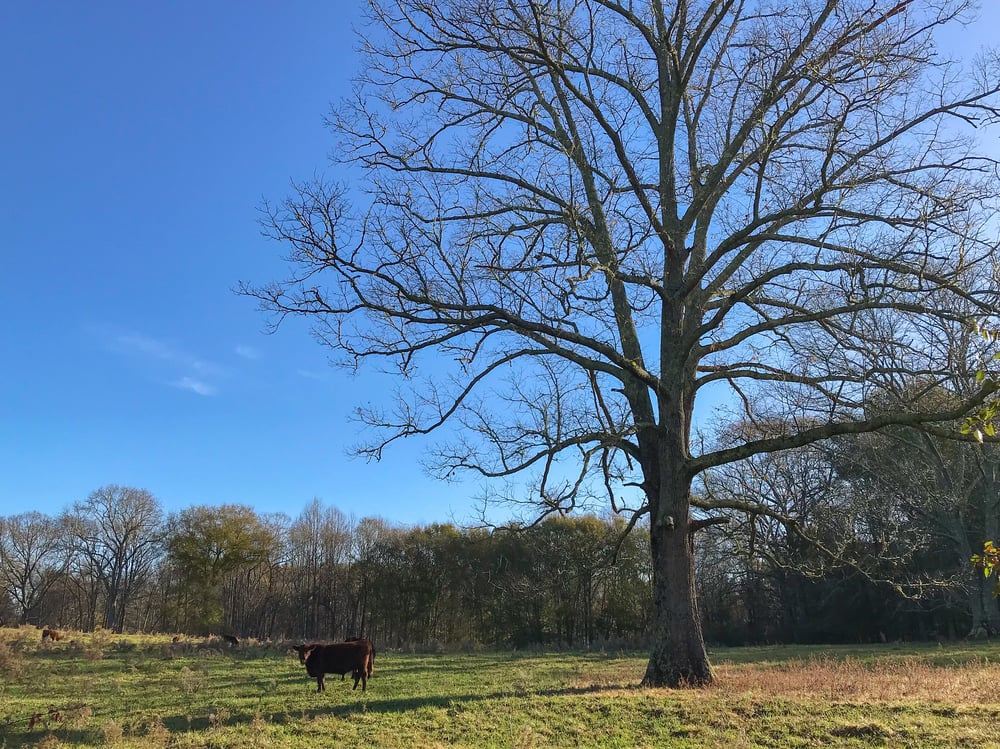
Final Thoughts on Layering for Winter in the South
Winter is a beautiful season in the South.
Not only do we not have to worry about shoveling snow and plowing our driveways every morning, but the weather is usually pleasant enough to encourage outdoor activity.
As a Canadian, I truly relish the winter months here as a reprieve from the summer heat and a reminder of where I came from (without the blizzards, creaking icy rivers, snow drifts and ice!).
As homesteaders, hobby farmers, farmers and rural folks, we have a unique opportunity to cultivate an appreciation for the season — and proper layering is central to this.
Instead of hunkering down this winter and darting between your car and your home or home and barn or barn and heated chicken coop, I’d encourage you to embrace the cold with optimal layering and outerwear.
You’ll be healthier and more productive for it and more comfortable too.


